Physical Address
304 North Cardinal St.
Dorchester Center, MA 02124
Physical Address
304 North Cardinal St.
Dorchester Center, MA 02124
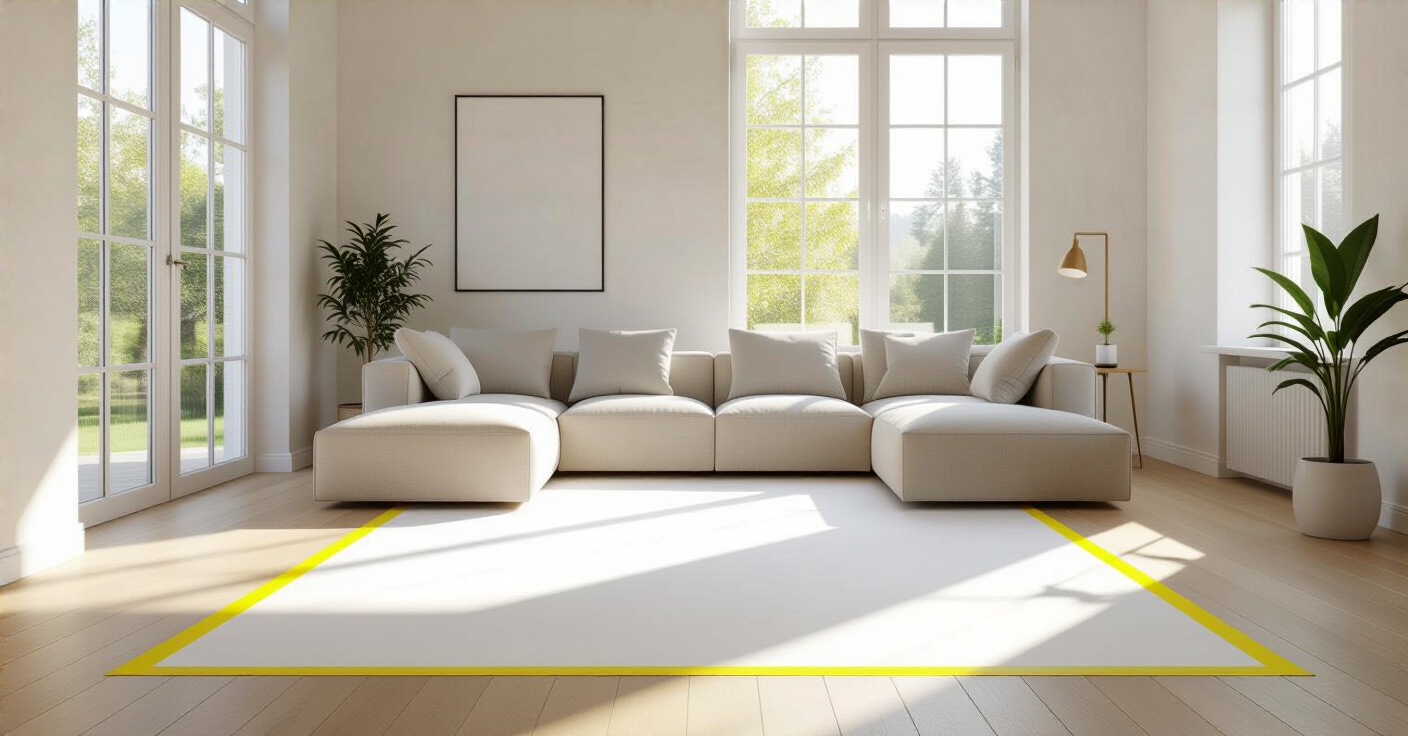
Find your sanctuary with our guide to living room couch ideas. Learn to choose a sofa for mindfulness, comfort, style, and function. Your calm awaits.
You know what people always ask me? They point to a picture in a magazine and say, “How do I get my living room to feel like that?” They’re not just talking about the color or the style. They’re talking about the sense of peace, the feeling that you could walk into that room, take a deep breath, and let the stress of the day fall away.
And my answer usually surprises them. It’s not about the paint or the art. It starts with the couch. The couch is the energetic heart of your living room. It’s where we unwind, connect, and rest. But most of us buy one based on a quick sit in a showroom or because it was on sale. We treat it like an object, when really, it’s a partner in our well-being. Getting it wrong creates a subtle, constant friction in your space. Getting it right… well, that’s when your home truly becomes a sanctuary. So let’s forget the noise and talk about what actually matters.
Before you even think about fabrics or colors, the real work begins within the quiet space of your own mind and your own home. This planning phase isn’t a chore; it’s a form of mindfulness in itself. It’s about listening to what your space and your spirit truly need, ensuring the piece you bring in serves you completely, rather than you contorting your life to serve it.
Can we talk about the most common mistake people make? They fall in love with a couch’s idea before checking in with the reality of their space. That feeling of a couch arriving and not fitting through the door isn’t just a logistical headache—it’s a jarring, stressful energy to bring into your home right from the start. Taking measurements isn’t just practical; it’s an act of respect for your home’s boundaries.
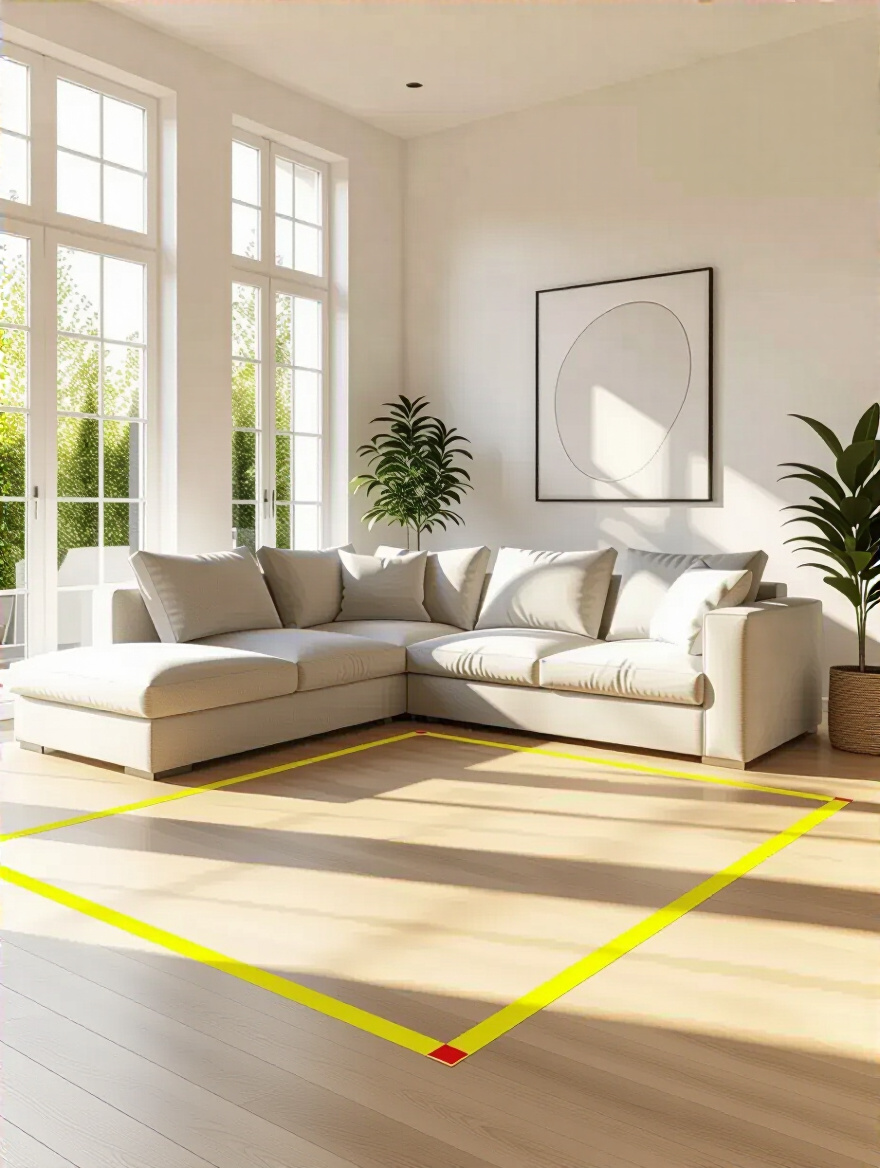
A couch that’s too large suffocates a room, blocking flow and making it feel stagnant and heavy. A couch that’s too small can feel ungrounded and lost. Use painter’s tape to outline the footprint of your potential couch on the floor. Live with that tape outline for a day or two. Walk around it. Feel the space it occupies. This simple practice moves you from abstract numbers to a felt sense of how it will coexist with you.
This act of measuring and mapping ensures the couch brings a sense of balance, not chaos, into your sanctuary from the very first moment.
Now, let’s be honest about how you actually live. Do you envision yourself perched elegantly on the edge of the sofa, or are you—like most of us—more likely to be curled up with a cup of tea, a pet, and maybe even a bowl of soup? Your couch needs to support your real life, not a fantasy life. If you meditate on the floor, a high-legged couch that gives you space to tuck your feet under might feel more open and supportive than a heavy, low-slung one.

A friend of mine bought a beautiful, delicate linen couch because it looked serene. But she has two golden retrievers and a love for red wine. Her life with that couch became a constant battle against stains and pulls, filling her “calm space” with anxiety. The most mindful choice is the one that accepts and supports your life as it is. Choosing durable, pet-friendly fabric isn’t a compromise on style; it’s a commitment to peace of mind.
It’s about choosing a partner for your life, one that can handle the beautiful mess of it all without adding to your stress.
What feeling do you want to cultivate in your space? Peace? Creativity? Warm connection? Don’t just look for “modern” or “traditional” couches. Instead, create a mood board and focus on the feeling the images give you. Are the lines soft and curved, or clean and straight? Are the textures rich and deep, or light and airy? Your aesthetic is your intention for the space made visible.
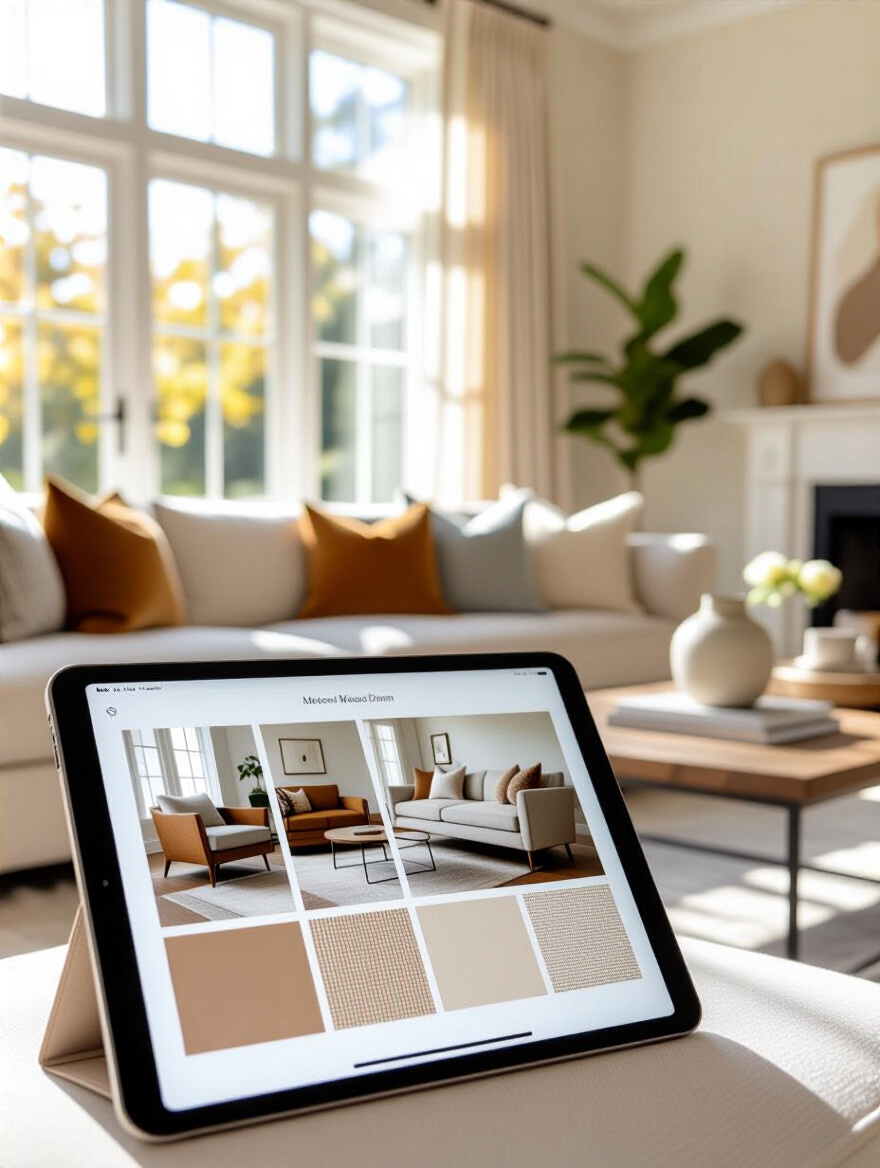
This isn’t about being trendy. It’s about creating an external reflection of your internal landscape. When your outer world aligns with your desired inner state, it becomes a powerful tool for mindfulness. That sleek, minimalist couch might look incredible online, but if you crave cozy comfort, it will always feel slightly off, like wearing shoes that don’t quite fit. The goal is to walk into the room and have your body sigh in recognition: “Yes, this is me.”
This alignment between your space and your self is where deep, restorative comfort is born.
“Flow” is just another word for how energy moves through a space. A clunky configuration creates stagnant energy, forcing you to awkwardly shuffle around furniture. A thoughtful one creates a sense of ease and grace. An L-shaped sectional can create a wonderful, contained nook for connection in a large room, but it can completely block the flow in a smaller one.
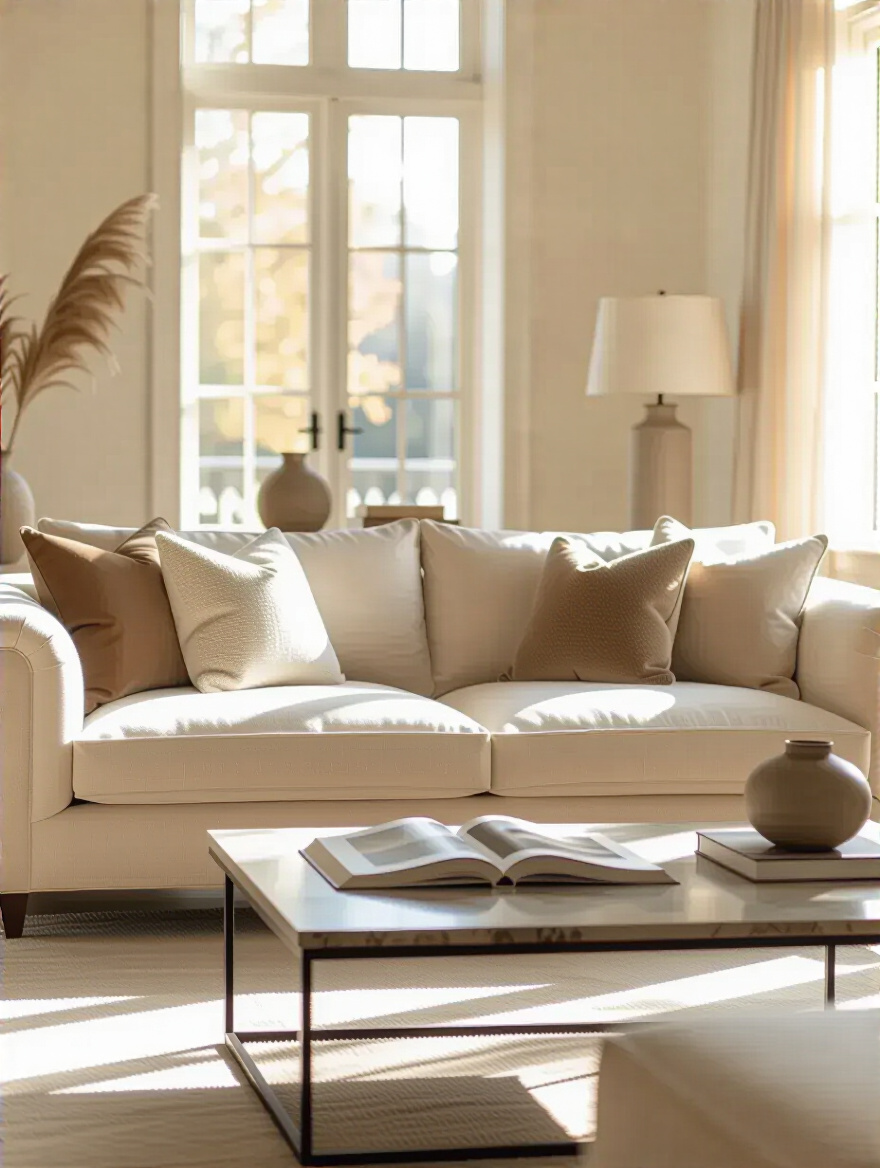
Sometimes, two smaller sofas facing each other create a more intimate and flexible conversational space than one giant sectional. Or a simple three-seater paired with two comfortable armchairs offers more versatility. Don’t just default to the standard sofa-and-loveseat combo. Consider how you want to interact in the space. Do you need room for a yoga mat in front of it? Do you want to encourage face-to-face conversation? The shape of your seating directly influences the energy of connection.
The right configuration isn’t just about fitting more people; it’s about creating pathways for both movement and connection to flow freely.
Let’s talk about money, because ignoring it is a surefire way to create stress. A budget isn’t a restriction; it’s a framework for intentional decision-making. We’ve all been tempted by the cheap, fast-fashion version of furniture. It looks good for a season, but soon it sags and creaks, and its low-quality energy quietly drains the room. That’s not a bargain; it’s a recurring problem.
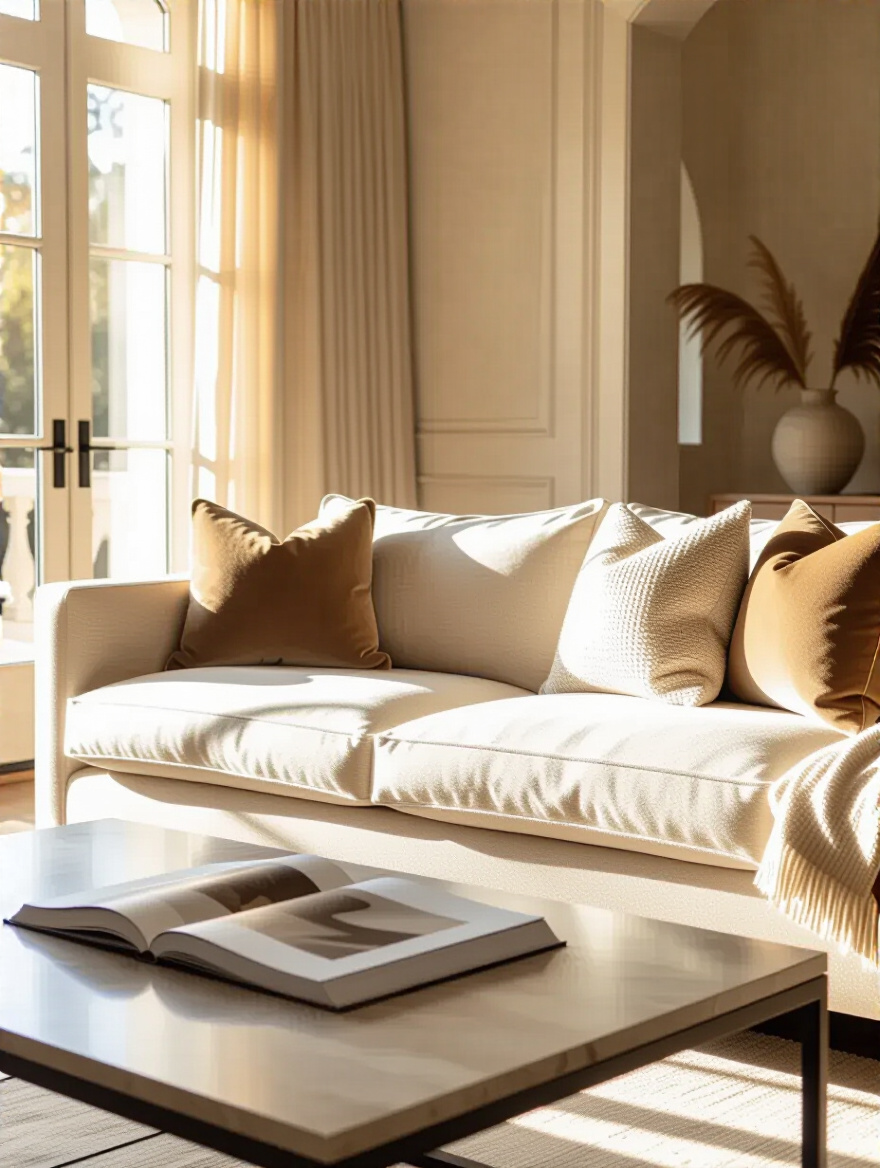
Instead, I encourage clients to think about the “cost per year of peace.” A well-made couch that costs more upfront but provides ten years of solid, comfortable support is a far better investment in your well-being than a cheap one you have to replace in three. Your budget helps you focus on what truly matters—a solid frame, supportive cushions, durable fabric—rather than getting distracted by flashy, low-quality trends. It’s a mindful use of resources.
Investing in quality is an act of honoring your future self, ensuring your sanctuary remains stable and supportive for years to come.
With your intention set and your needs clearly defined, we move into the sensory experience of choosing and placing your couch. This is where you connect with the physical object, testing its ability to deliver the comfort and support you planned for. This phase is about trusting your intuition and your body’s wisdom.
Fabric is the “skin” of your couch; it’s the part you will be in contact with every single day. The texture should feel calming to your touch. A scratchy wool, no matter how stylish, will be a constant, low-level irritant. A performance velvet or a soft, tightly woven synthetic can provide that soothing sensory input while also standing up to real life.
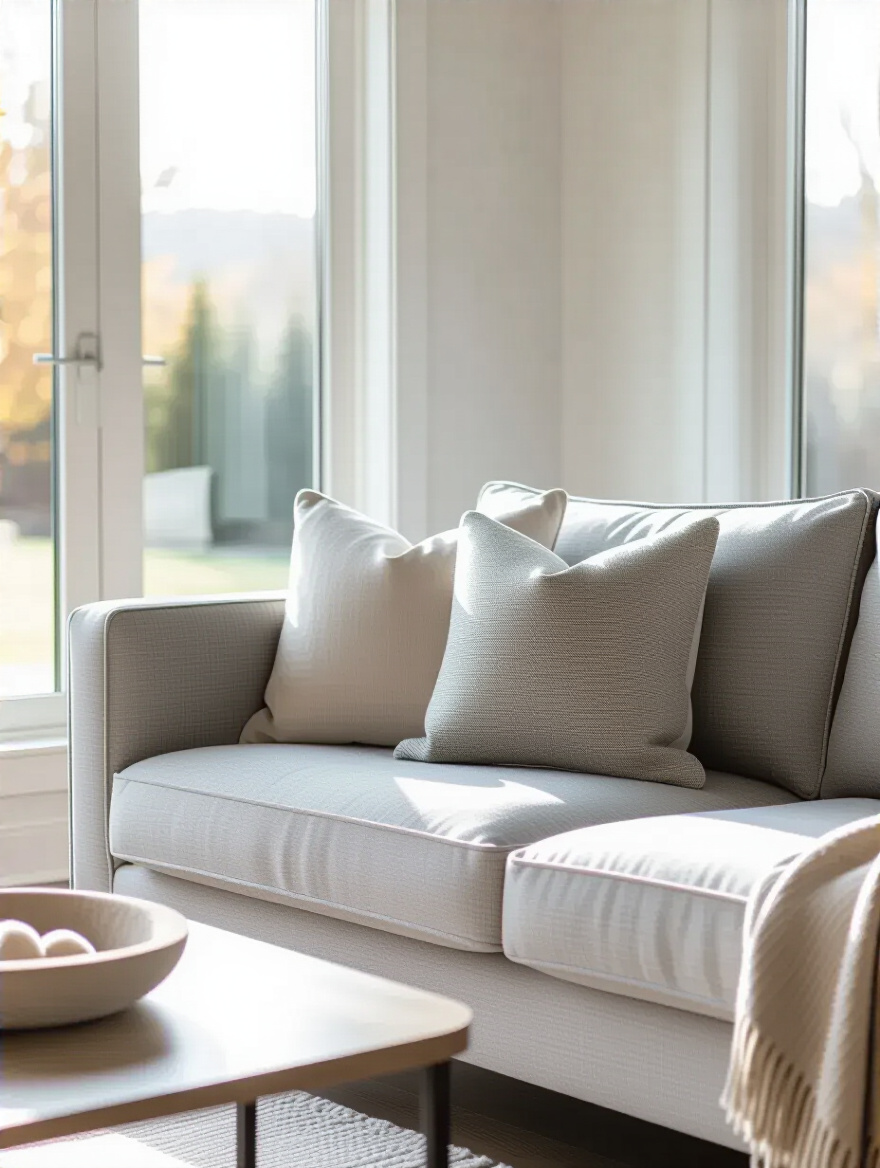
Forget the showroom labels and get samples. Take them home. Place them where the couch will live. See how they look in the morning light and under the evening lamps. Spill a bit of water on them to see how they repel moisture. Rub them against your cheek. Your sense of touch is a powerful guide. For homes with pets or children, performance fabrics like Crypton or Sunbrella are a modern miracle, allowing for deep relaxation because you’re not constantly worried about spills.
Choosing a fabric that feels good and lets you relax without worry is one of the most profound acts of self-care you can make in your design choices.
Here’s the shortcut I wish everyone knew: lift one front corner of the couch a few inches off the floor. If the other front leg lifts almost immediately, the frame is rigid and strong. If it twists and the other leg stays put, the frame is weak. Walk away. A couch’s frame is its skeleton; its core strength. A wobbly, weak frame creates an energy of instability. You want your anchor piece to feel solid and grounded.
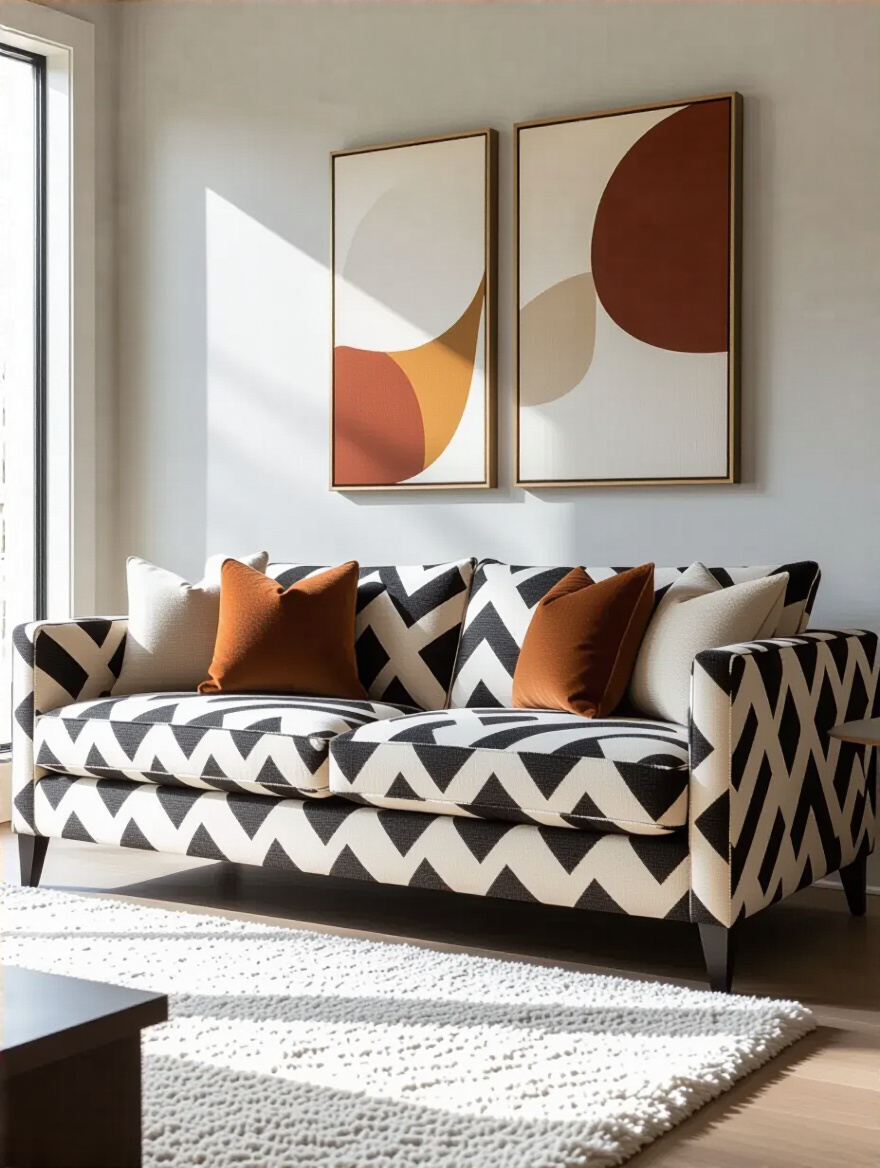
Look for kiln-dried hardwood frames—they’re less likely to warp. And when it comes to cushions, don’t be afraid to ask what’s inside. High-resiliency foam provides support that lasts, while a down-blend wrap adds that gentle, sink-in softness. Unzip a cushion if you can. See the quality of the construction. It’s like checking the foundation of a house. You can’t have a peaceful home on a shaky foundation.
This inner strength is what will provide you with steadfast comfort and support long after the showroom newness has faded.
Please, do not buy a couch you haven’t sat on. This is a non-negotiable. And don’t just perch on the edge for thirty seconds. Recline. Curl up your feet. Lie down as if you were watching a movie. Take off your coat and shoes. Spend at least five to ten minutes on it. This is not just a transaction; it’s a somatic exploration. You are listening to your body.
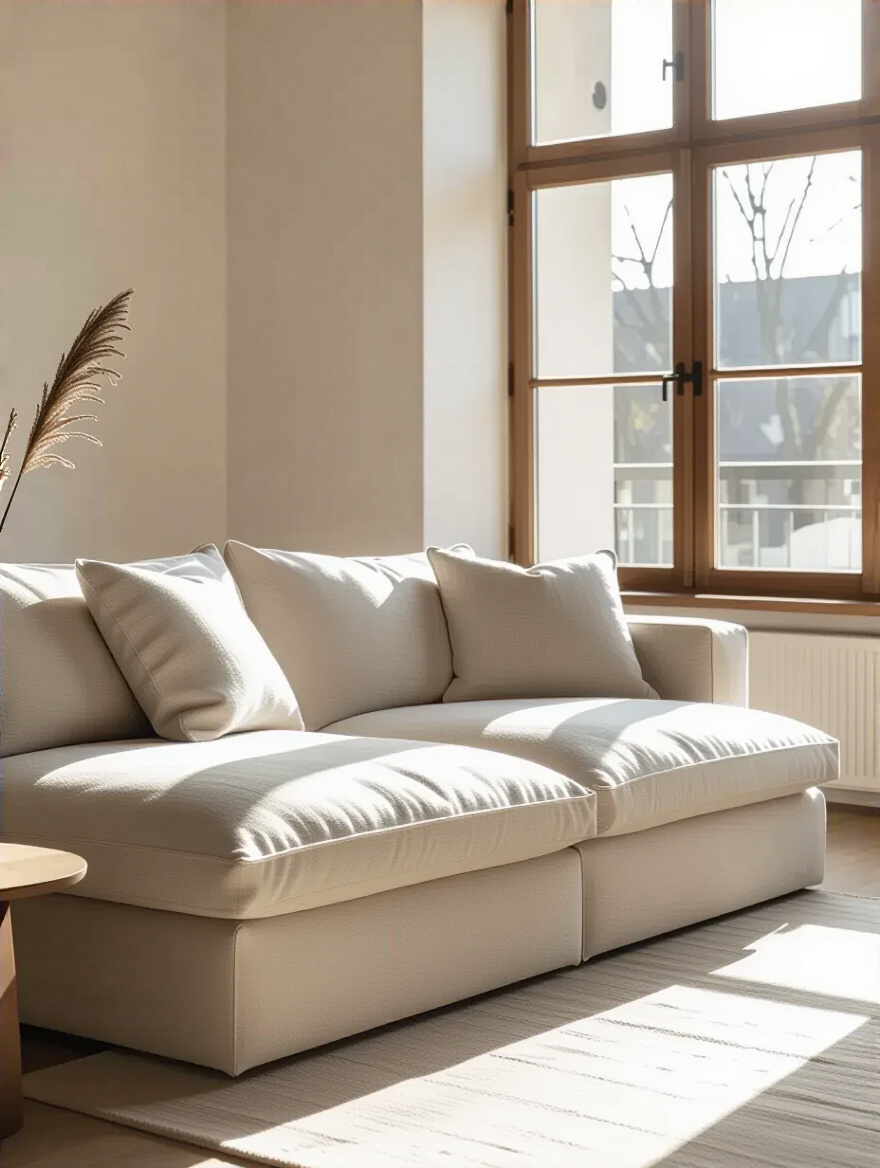
Does the back support your spine, or does it force you to slump? Is the seat deep enough for you to curl up, or so deep your feet dangle uncomfortably? Pay attention to any subtle tensing in your shoulders or neck. Your body knows what it needs. A couch that doesn’t fit your body will be a place of subtle tension, not release. A client once fell in love with a stunning sofa, but when she tested it properly, she realized the arms were too high, forcing her to hunch her shoulders. That little detail would have sabotaged her entire goal of creating a relaxing space.
Trust the wisdom of your body; it will always tell you the truth about comfort.
Color is energy made visible. It has a profound impact on our nervous system. While a bright, bold pattern can be energizing and joyful, it might not be the right choice for a space dedicated to quiet contemplation. Most of the time, I guide clients toward a neutral, solid color for the couch itself—a soft grey, a warm cream, a deep navy. This creates a calm, grounding foundation.
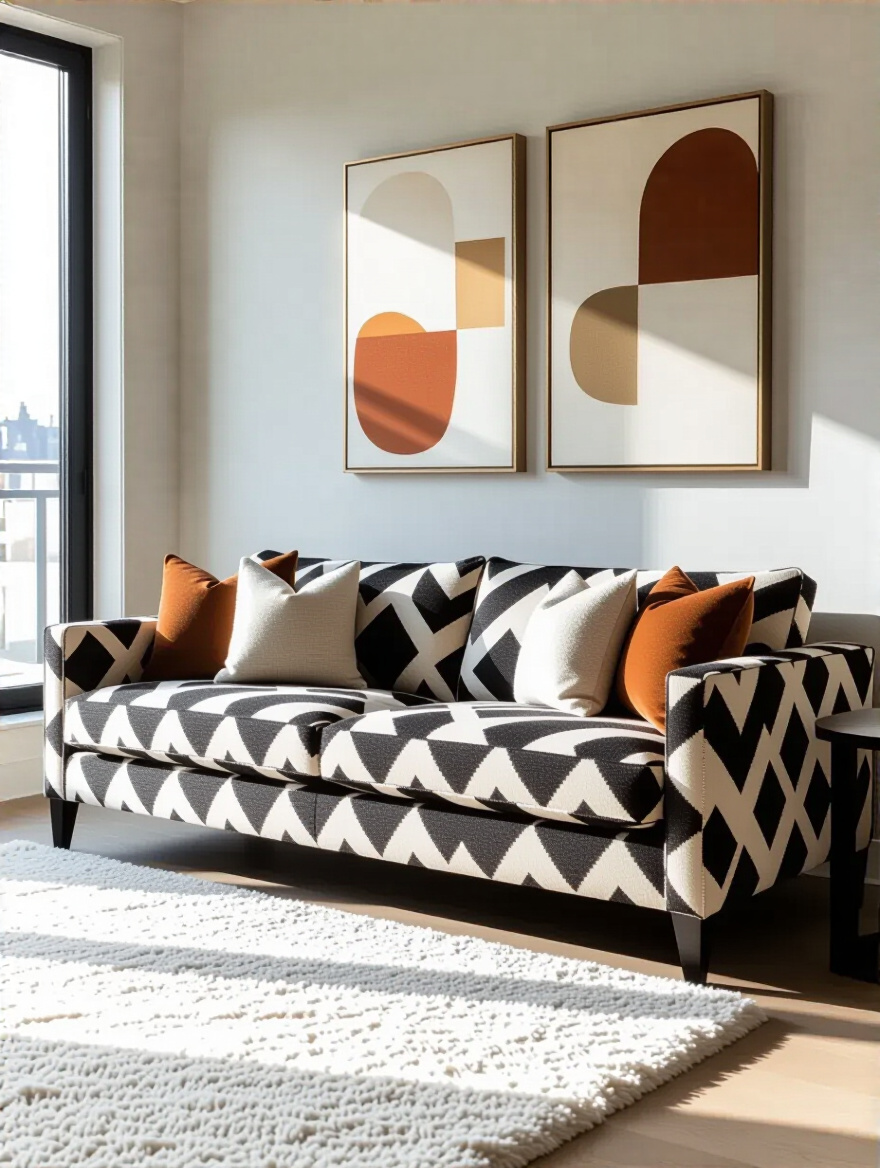
Think of the couch as your canvas. The neutral base allows you to introduce color, pattern, and seasonal shifts through less permanent items like pillows and throws. This approach offers flexibility and longevity. It allows the room to evolve with you without requiring a massive new investment. A serene, neutral couch will support any mood you wish to create, from a vibrant, energetic gathering to a quiet, restorative evening alone.
This choice ensures your couch remains a source of calm, adaptable to the shifting energies of your life.
The journey of the couch into your home is its first energetic imprint. A stressful, damaging delivery process, full of scraped walls and frustration, infuses the piece with negative energy before it even settles. To avoid this, walk the exact path the delivery team will take, from the truck to the living room. Measure every doorway, every narrow hallway, and every tight turn.
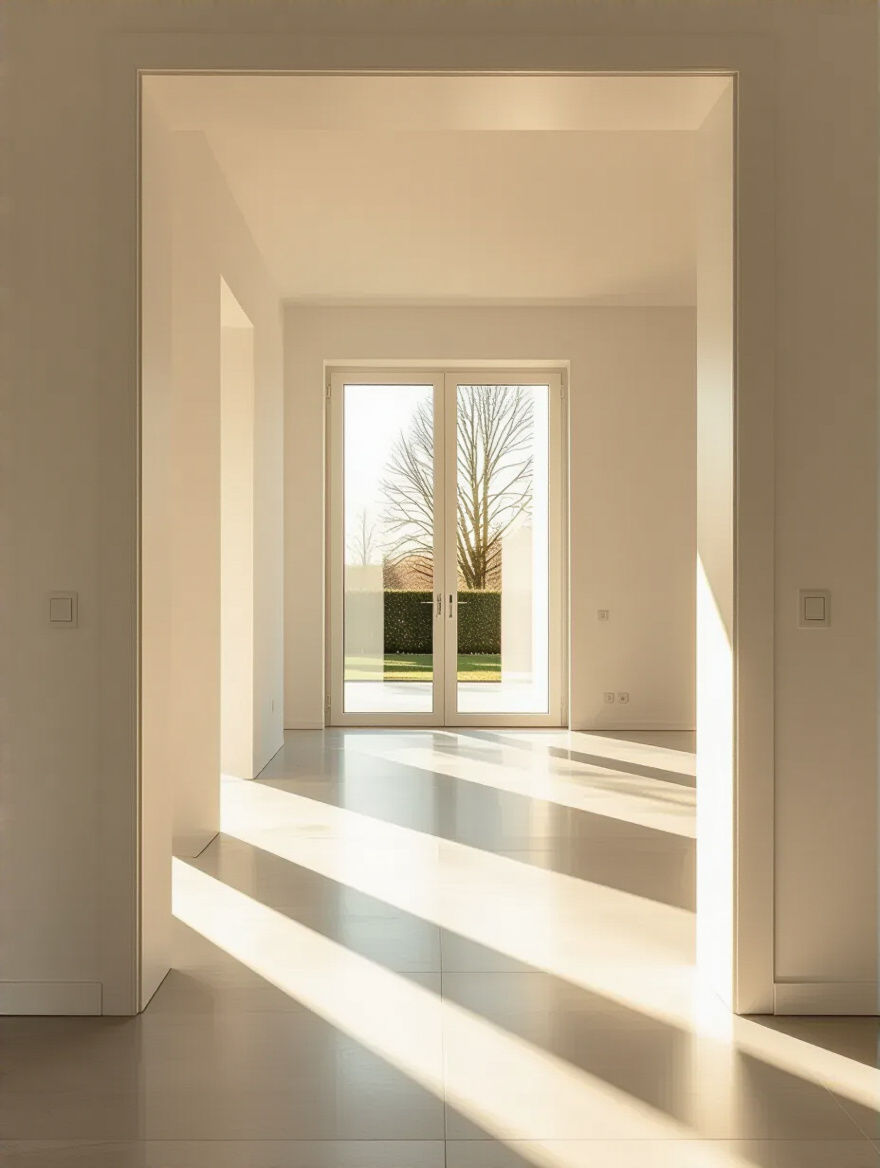
Communicate with the delivery company. Send them photos of tricky spots. Ask if the legs are removable or if the piece can be disassembled. Planning for a smooth delivery is an act of intention. It ensures the first moments of your couch’s life in your home are peaceful and effortless, setting the tone for the calm it’s meant to provide. Don’t let the final step be the one that undoes all your thoughtful planning.
A seamless delivery is the final, essential step in welcoming this piece into your sanctuary with grace.
Where you place the couch is just as important as the couch itself. The common mistake is to push it flat against a wall. This can create a static, rigid feeling. Try “floating” the couch in the middle of the room to create a more intimate conversational area and define the space, especially in an open-concept home.
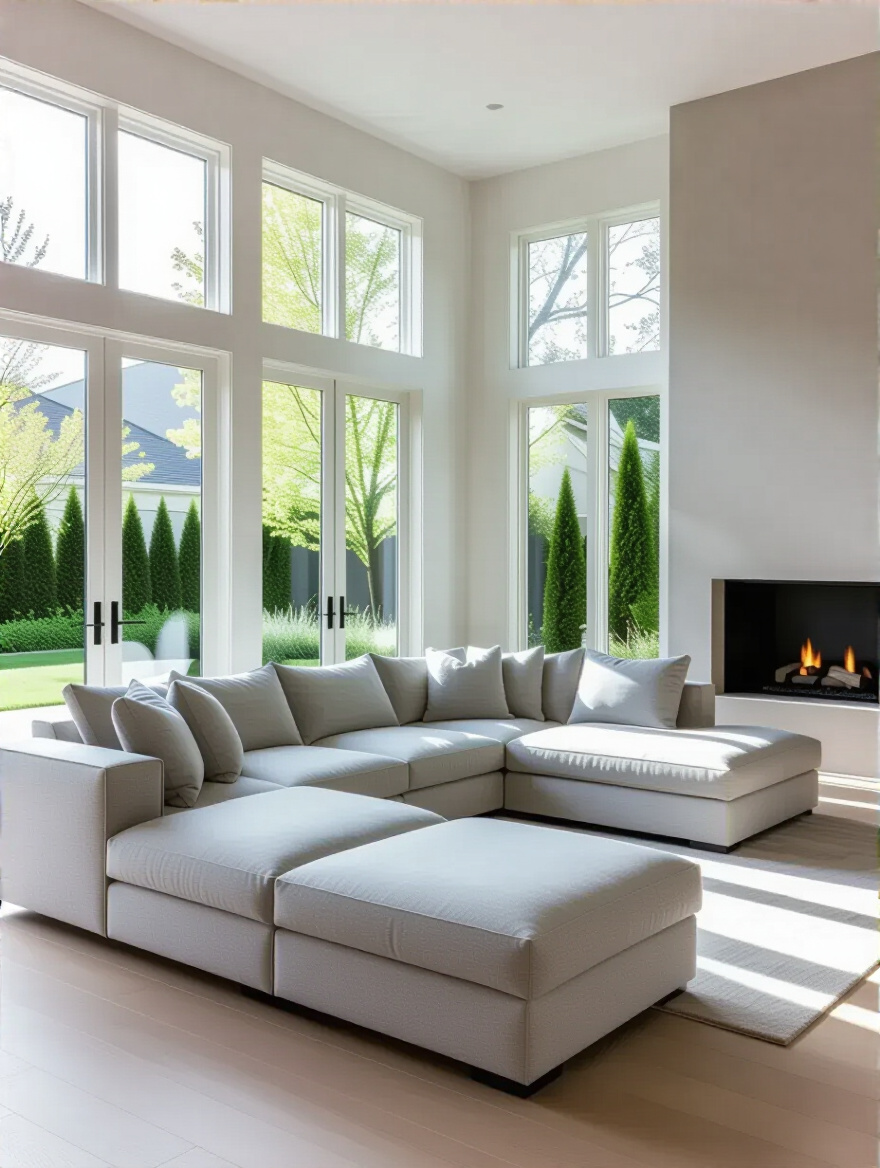
Consider the primary sightline. When you are resting on the couch, what do you want to be looking at? A beautiful window with a view of nature? A cherished piece of art? A calming fireplace? Don’t automatically orient your entire room around a television. Orient it around the focal point that brings you the most peace and joy. This simple shift in placement can fundamentally change the purpose of the room from passive consumption to active restoration.
This final positioning is about directing the flow of energy and your attention toward what nourishes you.
With your couch thoughtfully chosen and perfectly placed, the final layer is about a personal, sensory experience. This is how you make it uniquely yours, transforming it from a piece of furniture into an invitation to rest, connect, and just be.
This is where you infuse the space with personality and sensory delight. Think in layers of texture. A chunky knit blanket, a soft velvet pillow, a cool linen cushion—each provides a different tactile experience that can be incredibly grounding. This is not about clutter; it’s about curating a small collection of items that invite touch.
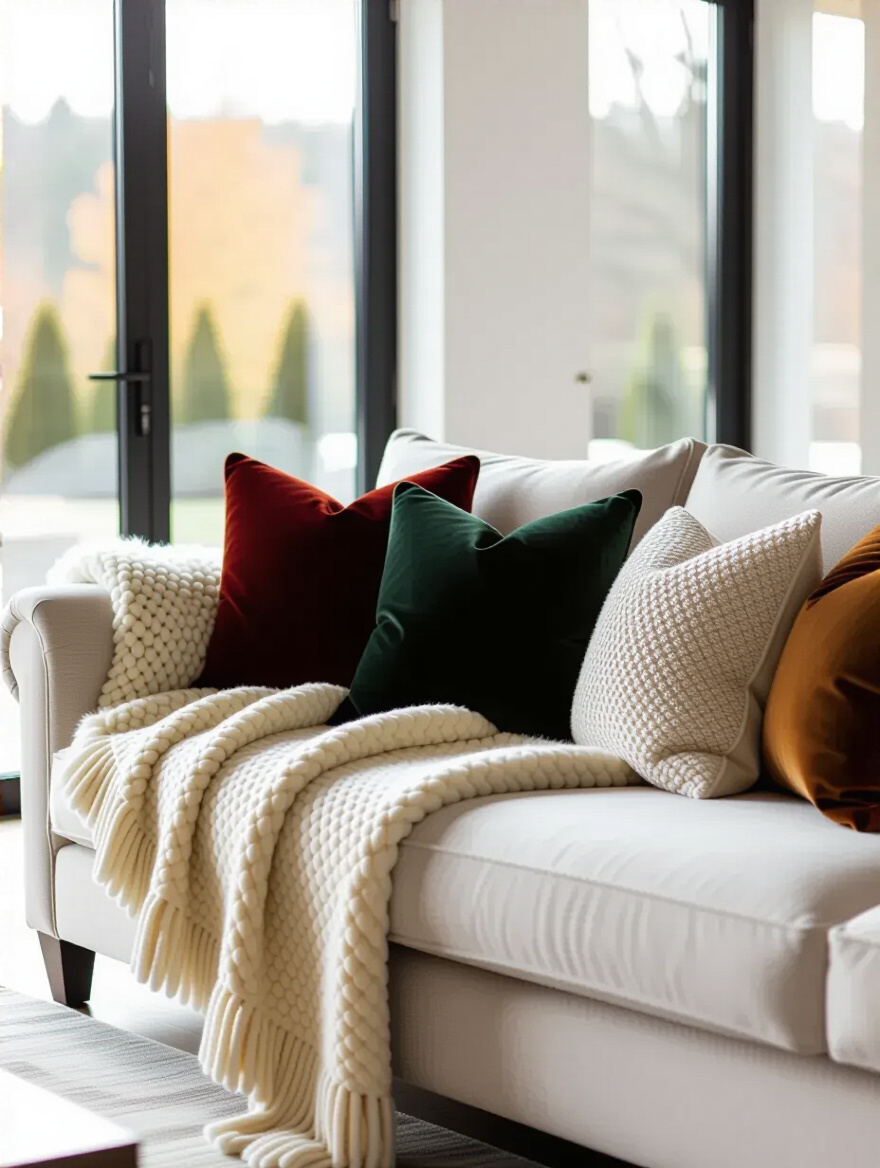
Use pillows to adjust the couch for your specific needs. A lumbar pillow can add crucial back support. Softer pillows can be hugged during a movie. A beautiful throw isn’t just for warmth; it’s a visual cue to slow down, get comfortable, and rest. These final touches are the easiest to change, allowing you to shift the room’s energy with the seasons or your mood. They are the final exhale in the process of creating your sanctuary.
Ultimately, choosing a couch is a profound opportunity to practice mindfulness. It’s an exercise in listening to your needs, honoring the reality of your life, and intentionally shaping your environment to support your well-being. It’s about understanding that your home is not merely a collection of things, but a living, breathing space that has the power to restore your energy and calm your mind.
The perfect couch isn’t waiting in a showroom; it’s waiting at the intersection of your truest needs and your deepest intentions. By following this mindful path, you’re not just buying a piece of furniture. You are consciously creating the heart of your sanctuary, a place that will hold you, comfort you, and welcome you home, day after day.